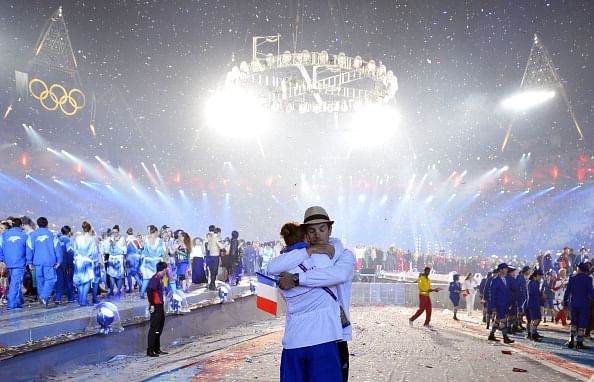
The morning after: Memories...and several questions

It’s over.
The half-month long global celebration of sport finally wound down with a grand music show, leaving us with memories and lots of analysis to do.
India finished 55th in the medals tally; the country didn’t do as well as expected (the general consensus before the Olympics was between nine and eleven medals); but we’ll take six. After all, it was India’s best-ever haul.
I watched the closing ceremony at Greenwich, close to the Royal Observatory, where a public screening was arranged. There was the feel of a night-long festival, with people parking themselves on the grass and spreading out mats and peacefully sipping beer and drinking in the music. From time to time, as the screen showed British athletes, they applauded.
On the streets and trains, the last few days had seen people proudly displaying the British flag. The Union Jack had suddenly become more visible. There was no doubt that, as the Olympics progressed, a deep-rooted nationalism was out in the open again, but it was a nationalism that was cheerful; not boorish, for I noticed that everybody applauded the non-British athletes as well. Among British athletes themselves, the crowd had responded with equal warmth to the likes of the Somalia-born Mo Farah, and had adopted him as one of their own.
There are theories on the rise of a dangerous nationalism with sport as its vehicle (the most common reference being made to the 1936 Berlin Olympics organised by Hitler), but I couldn’t detect any strand of that brand of nationalism. Perhaps there are just too many internal contradictions in Europe’s identity politics of today for such a view to prevail.
I ask this of myself: as a Bangalorean, what does the London Olympics mean to me? It all looked so flawless on TV; such a far cry from the way Delhi organised the Commonwealth Games. But closer to the action, the feeling is: London did not do anything out of character.
London did not have to transform itself fundamentally for the Olympics the way Delhi had to for the Commonwealth. The support system of the city, such as its public transport networks, information systems for visitors, accommodation, etc – wasn’t stretched. In other words: the average Londoner went about his life with hardly a blip.
There wasn’t therefore a feel that a special event was on. It was business as usual in the trains and on the streets. As the Games progressed, one got to see people wearing British colours, and chatting excitedly, but that was about it. London’s infrastructure was good enough to accommodate the Games without appearing to be burdened with it. New Delhi, on the other hand, had to undergo a fundamental transformation – ashamed of its ‘Delhi-ness’, it had to shift the homeless and the destitute outside the city; it had to create separate bus lanes, and create entirely new sporting edifices that all had to be protected within several rings of security. For a fortnight, Delhi aspired to become a city of its own limited imagination, without beggars and poverty and traffic jams for all the thousands of visitors. Once the Commonwealth was over, it was back to business, but in a different way – the office-goer or student returned to his own Olympic challenge of surviving the day. As for the street- dwellers, it was probably a question of which street was better: Delhi’s or Lucknow’s.
What is more important for us, as citizens, is to have ease of transport without requiring an Asian Games or Commonwealth to necessitate it. Of course, transport is just one of several parameters of liveability in a city. The greater its liveability, the more we will appreciate a Games of this scale.
We can also see how Western Europe produces more sports champions than we do. It’s essentially because sport is built into the fabric of everyday living. Sport access is not only for the privileged. Each borough here, for instance, runs several inexpensive and excellently-run sports centres. We cannot aspire for air-conditioned badminton courts and swimming pools, but surely we can expect open grounds with a running track and changing rooms? I notice that the churches here have sports programmes – they’re considered healthy community activity. Surely our centres of worship of all religions, which have vast lands and generate millions of rupees annually, can invest in a good earthly life for their believers rather than promise them a glorious afterlife?